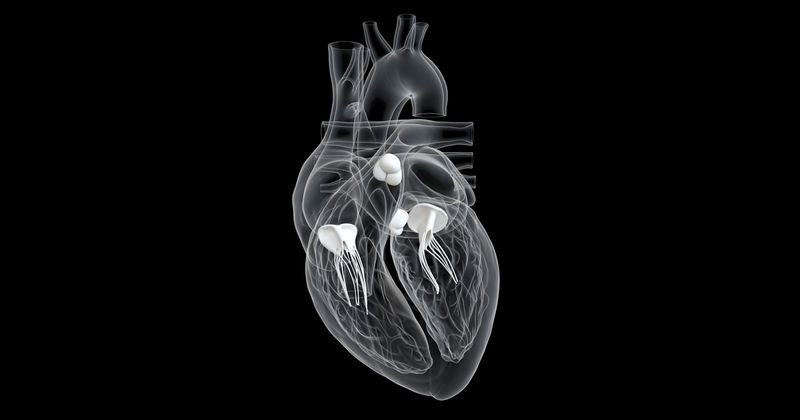Survival after 30 days similar in patients with, without cardiogenic shock undergoing TAVR
Key takeaways:
- If patients with cardiogenic shock undergoing TAVR survive 30 days, 1-year mortality is similar vs. those without cardiogenic shock.
- One-year survivors had improved NYHA functional class and KCCQ score.
Successful transcatheter aortic valve replacement was high in patients presenting with cardiogenic shock, and those who survived 30 days demonstrated significant functional improvement and quality of life at 1 year, researchers reported.
The researchers noted in a study published in the European Heart Journal that after 30 days, survival to 1 year was similar among patients who underwent TAVR with or without cardiogenic shock.

Image: Adobe Stock
“It is estimated that 1% to 4% of the patients undergoing TAVR may present with cardiogenic shock. Because of the low prevalence, prior single and multicenter studies have been limited by a small sample size,” Kashish Goel, MD, assistant professor of medicine in the division of cardiovascular medicine at Vanderbilt University Medical Center, and colleagues wrote. “The safety and efficacy of TAVR with new-generation transcatheter heart valves in patients with cardiogenic shock remains largely unknown. Accordingly, we analyzed the Society of Thoracic Surgeons/American College of Cardiology Transcatheter Valve Therapy Registry data to report in-hospital, 30-day, and 1-year outcomes of TAVR with balloon-expandable bioprosthesis in patients with aortic stenosis and cardiogenic shock in a contemporary real-world setting. We also report the predictors of 1-year mortality in this population.”
Goel and colleagues used data from the Transcatheter Valve Therapy Registry to assess TAVR outcomes and safety with contemporary balloon-expandable TAVR platforms at 30 days and 1 year (Sapien 3 and Sapien 3 Ultra, Edwards Lifesciences) in patients with cardiogenic shock.
Cardiogenic shock was defined as cardiogenic shock coding within 24 hours; preprocedural use of inotropes or mechanical circulatory support devices; and/or cardiac arrest within 24 hours before TAVR.
Survival rate at 30 days and 1 year
The analysis included 309,505 patients who underwent TAVR from June 17, 2015, to Sept. 30, 2022, of which 1.6% of patients presented with cardiogenic shock before TAVR (mean STS score, 10.76).
TAVR was successful for 97.9% of patients and technical success was achieved in 94.5%.
Among patients who underwent TAVR, propensity-matched analyses showed that cardiogenic shock was associated with higher in-hospital mortality (9.9% vs. 2.7%), 30-day mortality (12.9% vs. 4.9%) and 1-year mortality (29.7% vs. 22.6%) compared with those without cardiogenic shock.
However, in a landmark analysis, after 30 days, risk for 1-year mortality was similar between patients who underwent TAVR with or without cardiogenic shock (HR = 1.07; 95% CI, 0.95-1.21).
Patients alive at 1 year reported significant improvements in functional class, with 89% being NYHA class II or better, and quality of life, with an average Kansas City Cardiomyopathy Questionnaire (KCCQ) score improvement of 50, according to the study.
Predictors of 1-year mortality
The researchers reported the following variables were independent predictors of 1-year mortality among patients with cardiogenic shock who underwent TAVR:
- older age (HR = 1.02; 95% CI, 1.02-1.03);
- presence of peripheral artery disease (HR = 1.25; 95% CI, 1.06-1.47);
- prior implantation of an implantable cardioverter defibrillator (HR = 1.37; 95% CI, 1.07-1.77);
- on dialysis (HR = 2.07; 95% CI, 1.69-2.53);
- immunocompromised status (HR = 1.33; 95% CI, 1.05-1.69); and
- NYHA class III/IV symptoms (HR = 1.5; 95% CI, 1.06-2.12).
Moreover, higher mean aortic valve gradient (HR = 0.98; 95% CI, 0.98-0.99), higher albumin (HR = 0.66; 95% CI, 0.57-0.75) and higher hemoglobin (HR = 0.91; 95% CI, 0.87-0.95) were independently associated with lower 1-year mortality, according to the study.
“Despite the high mortality associated with cardiogenic shock, > 90% of the patients survived the initial hospitalization, and the majority of these patients were alive at 1 year with a significant improvement in their quality of life and functional status,” the researchers wrote. “Patients who survived the first 30 days after TAVR had similar mortality rates to those who were not in cardiogenic shock. TAVR should be considered as a definitive treatment in most patients in cardiogenic shock if they are anatomically suitable candidates and do not have prohibitive comorbidities that would curtail long-term survival. Future efforts should be focused on timing and peri-TAVR management of shock to further improve outcomes.”
